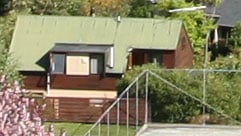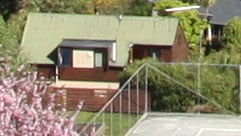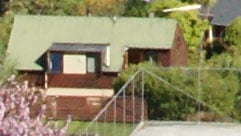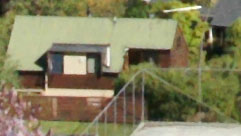Sony Alpha DSLR-A700 final production review
-
-
Written by Gordon Laing
Sony Alpha DSLR-A700 vs Canon EOS 40D vs Canon EOS 5D real-life noise
Sony Alpha DSLR-A700 |
Canon EOS 40D |
Canon EOS 5D | ||
 |
 |
 | ||
50 ISO not available |
50 ISO not available |
50 ISO (L) | ||
 |
 |
 | ||
100 ISO |
100 ISO |
100 ISO | ||
 |
 |
 | ||
200 ISO |
200 ISO |
200 ISO | ||
 |
 |
 | ||
400 ISO |
400 ISO |
400 ISO | ||
 |
 |
 | ||
800 ISO |
800 ISO |
800 ISO | ||
 |
 |
 | ||
1600 ISO |
1600 ISO |
1600 ISO | ||
 |
 |
 | ||
3200 ISO |
3200 ISO (H) |
3200 ISO (H) | ||
 | ||||
6400 ISO |
6400 ISO not available |
6400 ISO not available |
|
The Sony Alpha DSLR-A700 applies high ISO noise reduction at sensitivities of 1600 ISO and above. It offers the choice of Normal, Low or High settings, and we have samples of each below. If you were hoping to see a big difference between the noise reduction settings though you’ll probably be disappointed – at least in our examples anyway. There are subtle differences visible, but not so much that one setting has become a no-brainer. Now let’s have a look at some more real-life images in our A700 gallery. |
Sony Alpha DSLR-A700 High ISO NR: LOW |
Sony Alpha DSLR-A700 High ISO NR: NORMAL |
Sony Alpha DSLR-A700 High ISO NR: HIGH | ||
 |
 |
 | ||
1600 ISO |
1600 ISO |
1600 ISO | ||
 |
 |
 | ||
3200 ISO |
3200 ISO |
3200 ISO | ||
 |
 |
 | ||
6400 ISO |
6400 ISO |
6400 ISO |
|
The Sony Alpha DSLR-A700 applies xxxxx Now let’s have a look at some more real-life images in our A700 gallery. |
Sony Alpha DSLR-A700 JPEG High ISO NR: NORMAL |
Sony Alpha DSLR-A700 RAW Sony Image Data Converter SR 2 |
Sony Alpha DSLR-A700 RAW Adobe Camera RAW 4.2 | ||
 |
 |
 | ||
800 ISO |
800 ISO |
800 ISO | ||
 |
 |
 | ||
1600 ISO |
1600 ISO |
1600 ISO |
To compare noise levels under real-life conditions we shot this scene with the Sony Alpha DSLR A700, Canon EOS 40D and Canon EOS 5D within a few moments of each other using each of their ISO settings. The A700’s High ISO NR was set to Normal in this first set of results and the D-Range Optimiser set to Standard. We tested the A700 with the Sony DT 16-80mm and the 40D and 5D with the Canon EF 24-105mm, all adjusted to deliver the same field of view and set to f8 for optimum sharpness. The 40D’s crops show a slightly larger area due to its slightly lower resolution. Note: the Sony A700 was running firmware version 2.0. |
The image above was taken with the Sony Alpha DSLR-A700 at 26mm f8, and the original Fine JPEG measured 4.15 MB. The crops are taken from an area below and to the left of the centre.
As with our first results page, the A700’s crops appear softer than those from the Canon bodies, although much of this is due to lower in-camera sharpening. If you increase the in-camera sharpening level or apply sharpening later, the A700’s results here at lower sensitivities can look remarkably close to those from the Canon bodies.
Of course sharpening can only work if there’s detail captured in the first place and as the sensitivity increases, the A700 gives you less to play with. Things look good up to 400 ISO, but at 800 and 1600 ISO, pixel peepers will notice a familiar Sony noise reduction strategy kicking-in, producing a slight water-colour effect on the finest detail. You can see this on the foliage and blossom areas which appear slightly smudged compared to the Canons.
This is serious pixel-peeing though and is unlikely to affect most people. Ultimately the A700 delivers good performance across its sensitivity range, although it’s clear the full-frame sensor of the Canon EOS 5D retains a comfortable edge at higher sensitivities. With both cameras set to 100 ISO and the sharpening of the A700 increased though, the results can be very close.
The Sony A700 allows you to adjust the high sensitivity noise reduction and to see what impact this has, scroll to the bottom of this page. Alternatively, for more real-life examples taken across its sensitivity range, check out our Sony A700 Gallery.





